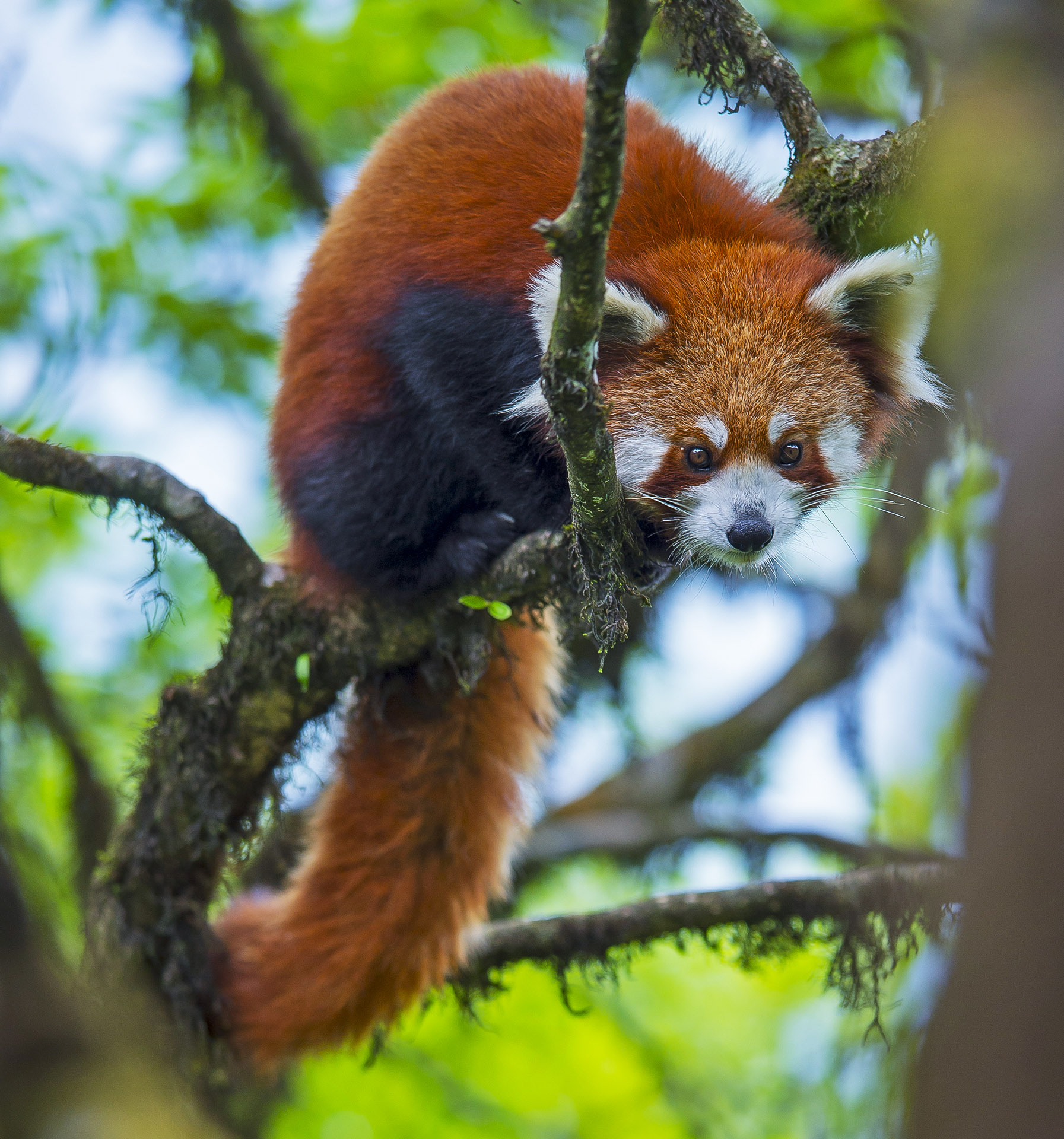 Listen to this article
•
15:34 min
Listen to this article
•
15:34 min
In the wild, some species are more social than others. Look at large cats, for instance: lions roam in groups called prides, but tigers are highly solitary beings. While some pachyderms like elephants like to live in herds, others like rhinos are quite the opposite and prefer their own company. Many animals like to live and hunt in packs or duos, but there are some loners who choose to go at it alone. Here are some species that prefer to remain secluded as they inhabit India’s wilderness.
Bengal Tiger
As an apex predator, the Bengal tiger (Panthera tigris tigris) does not like to share space. The cats are solitary and extremely territorial creatures, taking pains to mark their area with pee spray, poop, and scratch marks on trees. On drives in India’s forests, guides will often point out these markings to visitors, and use them to track the cats’ movements. A tiger’s territory depends on the prey base available, and can measure upwards of 30 sq km. Other cats venturing into this space are often met with hostility. Tiger cubs live with their mother for anywhere between 18-24 months, sometimes even longer, after which they venture off to eke out their own territory. As forest cover shrinks, this poses a challenge, and territorial fights between large cats often lead to unfortunate consequences.

Cover Photo: Red pandas live in the oak, rhododendron, and bamboo forests of Singalila National Park in West Bengal’s Darjeeling area, and may also be found in Sikkim, Arunachal Pradesh, and Meghalaya. Cover Photo: Dhritiman Mukherjee
Red Pandas
Red pandas (Ailurus fulgens) are cute little creatures that inhabit treetops and don’t descend to the ground too often. In India, they may be seen in the Himalayan forests of Sikkim, Arunachal Pradesh, and parts of West Bengal. Unlike other arboreal creatures, such as some apes, red pandas are loners who like to hang out by themselves, except during mating season. Most of their waking hours are spent eating bamboo, and the rest of the time they snooze on branches, leaving little room to socialise with their cuddly looking brethren. They mark their territory with liquid from their scent glands. Baby red pandas live with their mother in treetop nests, and only emerge after about three months. They continue to live with her until the next birthing cycle.
Pangolin
The Indian pangolin (Manis crassicaudata) is a shy, scaly creature that lives solo, on the ground, in grasslands and forests across India, except at high-altitudes and deserts. As the sun lowers, the nocturnal creatures scuttle about in search of their favourite food — ants and termites. And they go about their daily business as reclusive creatures. They burrow into the soil to feed and live, and when threatened by larger animals, curl up tightly into a ball, relying on their hard keratin scales to protect them. A female pangolin will shelter her young in burrows, and often ferry them around on her tail.

Monitor lizard
In overgrown and forested areas, a sudden rustle on the ground and a flash of movement between the dry leaves and grass could well be an Indian or Bengal monitor lizard (Varanus bengalensis) rushing for cover. These shy, terrestrial reptiles are common across India. They are recognisable by their long tail and pointy snout. The solitary Indian monitor prefers to live and forage on its own, usually inhabiting dark, rocky crevices or burrows. When threatened, these lizards can move at surprising speed, so if you are lucky enough to spot one, stay still and quiet and observe it from a distance.
Greater one-horned rhino
The greater one-horned rhino (Rhinoceros unicornis) is perhaps one of the most recognised symbols of Assam, inhabiting tall grasses in parks such as Kaziranga and Manas. If you’re lucky enough to spot these majestic creatures on drives through the area, in all likelihood you will see them roam alone. Rhinos are loners, and the males of the species are extremely territorial, marking their home range with dung and urine. While territories do often overlap, these pachyderms are largely companionless, spending their time grazing and eating leaves. The only time you’re likely to see more than one at time is if you spot a female rhino trailed by her young calves. Sometimes such family units will share space as they wallow in mud pools to keep themselves cool. Once that activity is done, it’s every rhino for itself.





